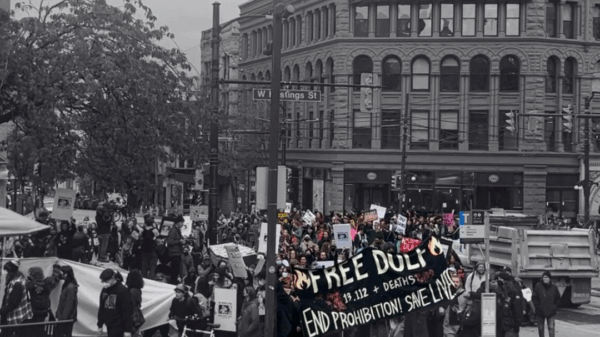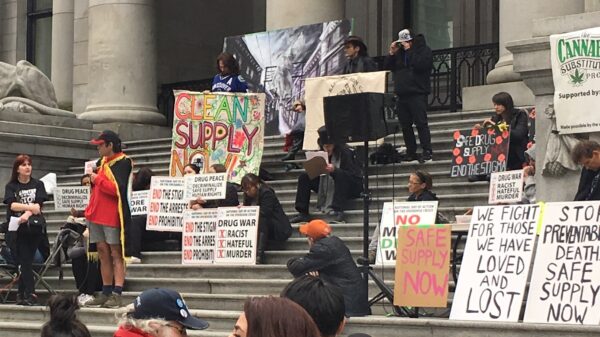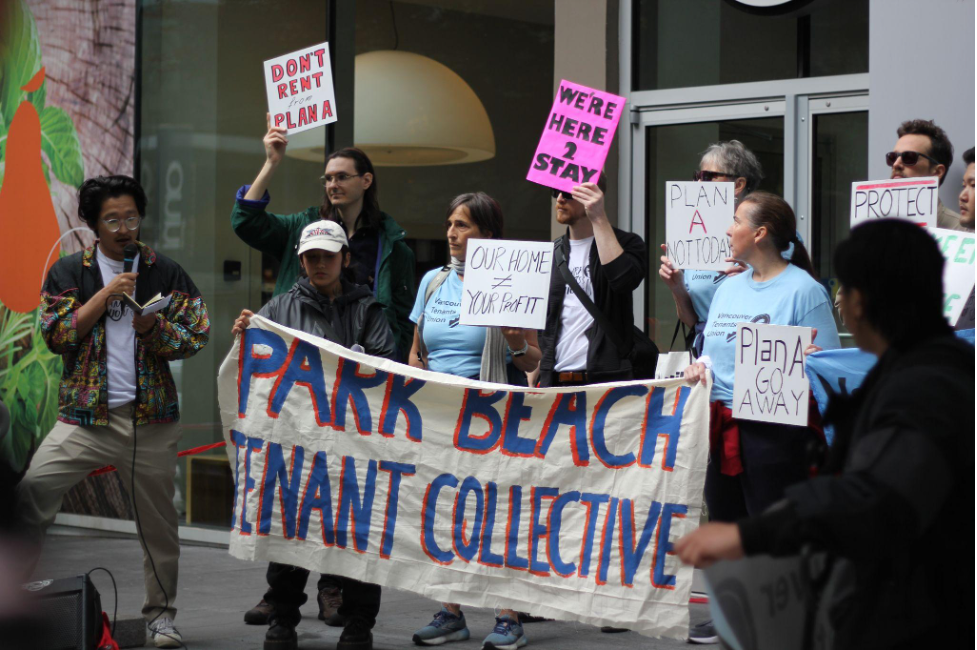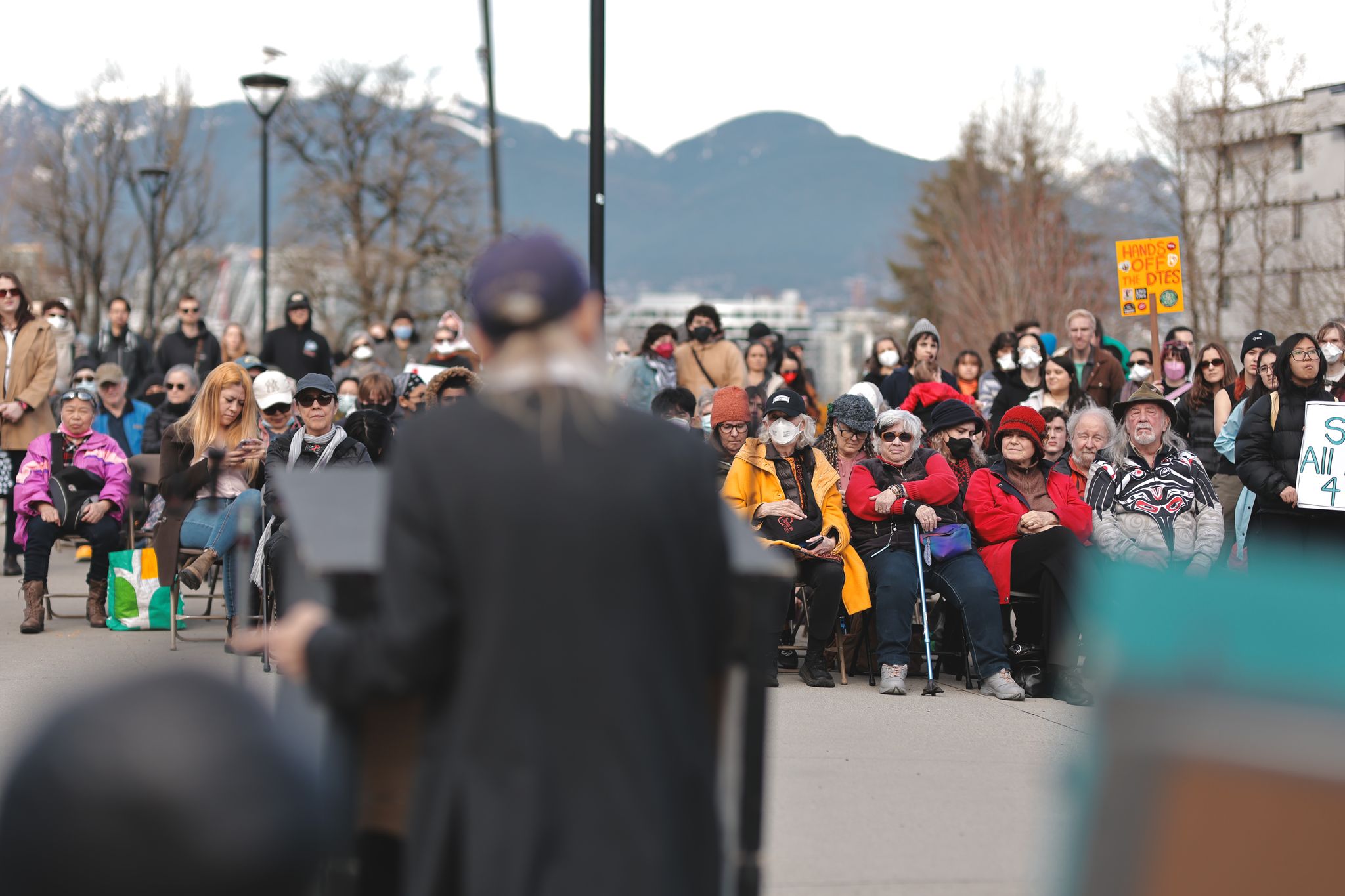As I write this I am sitting in the only detox facility in the West Kootenays, in the interior of British Columbia.
I am working alone with no clients in the building.
It is strange being alone in a detox facility when so many individuals are in dire need of the care and support provided here. Why am I alone at a facility dedicated to helping individuals who want support managing their substance use during an eight-year-long public health emergency?
The simple answer: lack of staff.
There are just not enough qualified people available to provide the specialized care required for safe effective treatment – especially with the amount of benzos now in the supply.
I have been working here as a withdrawal management worker for three years, and have seen countless individuals come through these doors.
Some leave and never return, while others come back multiple times. What someone considers ‘recovery’ – already a term with various meanings depending on setting – is different for each single person, and a one-size-fits all approach does not work.
There are a number of reasons why people do not return to detox, some are complex, others are simple. I must stress that it would be an incredibly rare occasion for someone to only need one stay at detox to sustainably change their drug use patterns.
In a rare survey on recovery experiences published by the Canadian Centre on Substance Use, 50 per cent of people had experienced a relapse, and this sample included only those who identify as successfully being in active recovery.
This survey also came out before the drug supply became as complex as it is today, often containing multiple psychoactive ingredients that can produce reliance and withdrawal.
The other reasons people do not return are more troubling.
Individuals I worked with have either lost their life due to substance use, particularly due to the toxic supply, end up in jail, or feel so much shame and guilt from not being able to “fix” themselves on their first try, they stay in the world they once tried to escape from.
Humanity of the Crisis
Over the years, as this crisis drags on, I have attended countless memorials. During the past month I have attended three celebrations of life for people who were my friends. I met some of these friends during my days in active addiction, others while working at the detox, and some through my work as an outreach worker.
Each and every person lost, and there have been more than 47,000 premature deaths from the poisoned supply in Canada since 2016, is a human with family, friends, and an inherent value whose death causes a ripple effect that touches so many people.
In BC, the Coroner-led Death Review Panel estimates that 225,000 people access the illicit drug supply, and approximately half of those people are considered to have problematic use. Between the number of users, and the amount of people impacted by drug poisoning deaths, it can be said that everyone is affected.
Those who think they are not impacted by this crisis are either very fortunate, perhaps benefit from the crisis, and/or very possibly live in a world of denial.
Involuntary Treatment is Dehumanizing
When I think about forced residential treatment, I cannot help but think of the sheer numbers of people at risk of being removed from their communities and placed in unfamiliar settings in understaffed facilities – especially since we cannot even staff my own workplace, amidst crisis-level staffing shortages in healthcare services across BC.
Is involuntary treatment meant to help the hundreds of thousands provincially and millions nationally who use drugs, or is it a guise to remove the people who are most visibly struggling, namely the unhoused folks primarily in large urban centers?
In Dan Marquardt’s article Involuntary Treatment is a Cruel Betrayal in The Mainlander, it is suggested that abducting people off the street, and forcing them into jails, will drive people further from the care and the services they would benefit from.
Is the intention of involuntary treatment to actually help people, or is it to remove them from the public eye? Is it for those who believe addiction and the toxic drug crisis does not affect them, so they can live their days without seeing the results of many failed attempts by the colonial powers at play to ‘fix the drug problem’?
This cruel objective may actually work in rural towns like the one I live and work in, as there are so few facilities available, people would be shipped away to urban centers.
Again: I am working today in an empty detox due to staffing issues. Finding people to work effectively with those needing support is difficult, both due to a lack of qualified people and adequate funding for the resources people need. Suggesting involuntary treatment without being able to actually provide the required support and personnel is just setting people up for failure, which happens when knee jerk actions are taken. Does the decriminalization fiasco ring a bell?
In Understanding Substance Use, Norman and Reist present the idea of a frog in a pond. The basic idea is that if a frog is found in a pond and is sick and suffering, most people will seek to answer why the frog is sick. First, we will ask if the pond is contaminated (unregulated and tainted substances)? Then we examine where there are environmental factors contributing (inadequate housing or food insecurity), and explore what else is causing this frog and all the other frogs’ pain and suffering. Using this lens, does it make sense to remove the frog – against its will as this is the environment it calls home – to “fix” it and then return the frog to the same environment which caused the harm to begin with? To me, it only makes sense to work on the pond while supporting the frog in its effort to get healthy.
Throughout the toxic drug crisis, research has shown that discharge from forced treatment increases risk of overdose. This is partly due to a forced lowered tolerance and the changing street supply if and when people relapse or use drugs again – a common occurrence.
First Person
I was once forced into a recovery setting against my will. In fact, I was required to be handcuffed to the bed to be prevented from leaving.
The trauma I experienced from that singular incident kept me in active addiction for an even greater length of time. I spent decades living in active addiction, but now enjoy a substance-free life, made possible through hard work and the support of loved ones (most importantly my mother), community members and professionals, and every type of recovery group imaginable, alongside other factors.
To reflect this chapter in my life, I made a video in conjunction with Interior Health, which speaks to some of the supports I relied on for building a life from which I no longer required an escape through substances. Concealed from this video is how much, and for how long, I relied on my support network. I was unable to experience any success with recovery until things such as stable housing, community connection, connection with professionals, and financial support were put in place, all of which were not made contingent on abstinence.
Now, I am completing the final year of the social work program at the University of Victoria. I work in withdrawal management, as a research assistant for Selkirk College Bridging Rural Homelessness and Wellbeing, and facilitate the Lived Experience Circle on Homelessness through Selkirk College. I am a member of the West Kootenay Indigenous-led Men’s Collective, and continue to be active in local 12-step programs. But most importantly, I am able to connect, support and inspire other people who share similar experiences to build a recovery by their own definition and goals. All of this was possible only through comprehensive support from various resources when I was ready – something everyone deserves a chance at.















